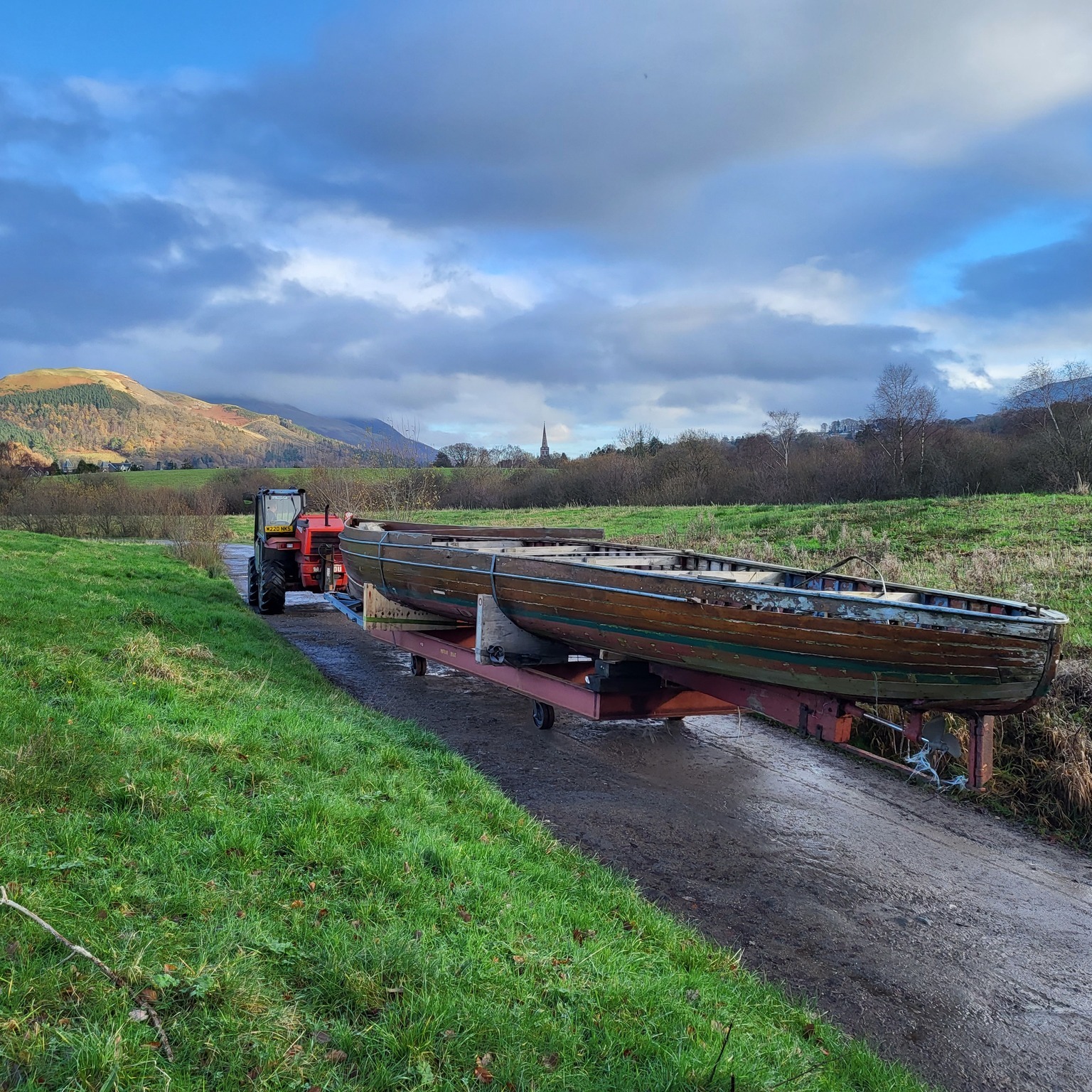Windermere Jetty Museum has acquired a historic electric powered vessel to join its collection. Built in 1904, Iris is a piece of pioneering history. For the past two decades, she has been slowly decaying on the shore of Derwentwater shore. Now in the hands of the conservation team at the Museum, the vessel will be restored to its former glory.
Despite the traditional design, the Iris was revolutionary, running on electricity while others relied on steam. Today, we’re circling back to electricity as a greener, modern power source and the conservation team at Windermere Jetty Museum are blending cutting-edge technology with traditional boatbuilding techniques to bring the vessel a new lease of life in the 21st century.
The story of Iris began with the Victorian obsession with countryside recreation. To keep up with demand, many Lake District stately hotels were built, including the Lodore Falls Hotel, which was built in 1870 by the side of Lake Derwentwater. The owners of the hotel sought to use water from the adjacent Lodore Falls to provide electricity and went on to set up a launch company which made use of the free electricity and ran passenger boats for its guests. Iris was commissioned by the Lodore Hotel to utilise the electricity from their hydroelectric plant.
Built by renowned Bowness boatbuilder Tom Hayton, whose premises were located on the bay at Bowness, Iris was then transported to Derwentwater using a traction engine which was supplemented by teams of horses. Moving the vessel must have been a challenge as it weighed 7 tons, was 45 ft long, 8ft wide and 2.6 ft deep!
Iris was operated by the Keswick Electric Launch Company running from the Lodore Falls hotel to Portinscale. She remained on Derwentwater following WWII when sold to the Ambleside Motor Launch Company to operate on Windermere. This is thought to be the time when the cabin was moved to accommodate a TVO (Tractor Vaporising Oil) engine. When Ambleside Motor Launch Company merged with the Bowness Bay Boating Company in 1968, Iris was converted to diesel. She worked on Windermere for forty years until the late 1970s when she returned to Keswick to re-commence service on Derwentwater. Apart from a brief spell on Coniston, Iris continued to operate on the lake until the end of the 1990s. For the last twenty years the Iris has sat decaying on the Derwentwater shore, until now.
Windermere Jetty Museum's conservation team are set to repair and restore the vessel according to the original design, combining its craft with new technologies. The vision is for this electric vessel to be sailing out on Windermere once more, offering a greener alternative for people to experience the lake. Follow the team’s restoration progress on their social media @windermerejetty.
Source: https://lakelandarts.org.uk/a-boat-ahead-of-its-time-a-1904-electric-vessel/
Read more about Windermere Jetty Museum, our Shipshape Network North Hub.
 Zone
North
Zone
North


